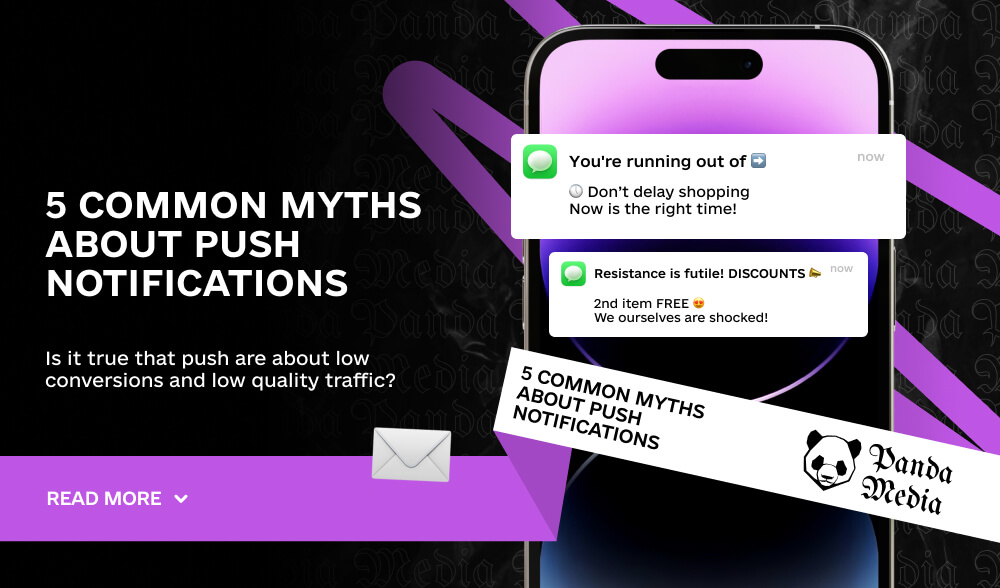Don't miss interesting news

There are a lot of misconceptions around push: from statements about the low quality of traffic to the fact that this source does not bring conversions at all and is dying. These myths are so ingrained that even experienced webmasters are afraid to work with this format. We have been actively using this type of traffic for several years now and decided to briefly explain, based on our own experience, in which cases these misconceptions are justified and where they are just fictions.
Only newbies use them. There was indeed a period in the history of the network when the use of push traffic decreased. In 2015, many people abandoned this source due to the new Google policy.
It’s been 9 years, but push notifications are still alive and well. According to statistics, push advertising holds a $3 billion share of the advertising market. This applies only to web push notifications. There are also InPage Push notifications: messages that appear when a user visits a page. They do not require a subscription and cover iOS users. Currently, both arbitrageurs and large brands are actively using push notifications, as evidenced by a significant amount in the statistics.
It’s true that spam can be annoying, and some people actively avoid subscribing to push notifications.
However, it’s worth noting that users sign up for push notifications voluntarily. This means that they agree to receive advertising content. According to data from Gravitec, only 30% of users ignore push notifications, while 60% view them.
What’s more, daily impressions of push notifications often reach billions of views, which indicates their significant effectiveness.
The quality of traffic directly depends on the chosen ad network. Each ad network works with a certain set of sites, which can contain hundreds or even thousands of resources, from pornographic to news portals. Some of these sites may indeed provide unwanted, dirty, or even motivated traffic. However, with a careful choice of an ad network, this problem disappears.
In addition, the concept of “low-quality traffic” is quite vague in itself. Push notifications may not always bring the best traffic in certain niches, but in our experience, they work great in the dating and utility space.
There is a widespread belief that push notifications often encounter fraudulent traffic, which leads to overpayments for clicks. However, this is not a problem if you choose the right ad network. A reliable network:
Many people believe that push notifications are effective only for B2C companies that advertise goods and services to a wide range of consumers.
In fact, push notifications can be extremely useful for the B2B segment. Push notifications allow you to promptly inform customers about new offers, product updates, important news, and events. They can be used to establish direct communication with partners, increasing their engagement and loyalty. In the B2B segment, it is important to use more personalized and relevant messages to ensure their effectiveness. Properly customized push messaging campaigns can bring significant results even in such specific markets as B2B.
Push notifications remain a great source of traffic if you choose the right grid and messaging. They are ideal for gray verticals, demonstrating good conversion rates without complex technical skills and expensive resources. This makes them a convenient option for testing new approaches with a limited budget.
It should be borne in mind that the effectiveness of push ads depends on many factors, such as vertical, affiliate program, webmaster, and ad network. Therefore, there are many myths around them, ranging from trifles to statements that this source is banned by all advertisers and does not bring normal traffic.
Push notifications require a careful approach – it’s easy to lose your budget if you act hastily. Remember: they can work great with one offer and be ineffective with another. Therefore, it is important to constantly test different strategies and analyze the results to find the best approach. Track metrics like conversion and engagement rates and adjust your messaging based on them. This will allow you to use push notifications effectively, increasing user engagement and maximizing ROI.